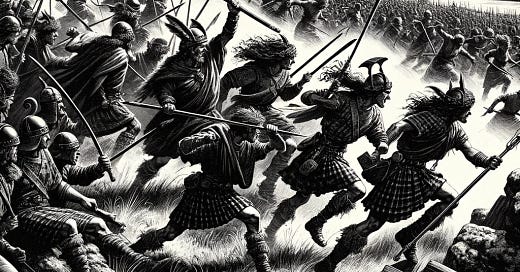The 8th Century Rivalry of Columbans vs. Ronans
In the serene yet rugged landscapes of Strathnaver, where the relentless winds carry tales of yore, the remnants of an ancient ecclesiastical schism linger, whispering the long-forgotten rivalry between the Columbans and the Ronans. This division, emblematic of the wider theological rifts of medieval Scotland, offers a profound insight into the spiritual dynamics that shaped the region's history.
Origins of the Schism
The origins of this ecclesiastical divide trace back to the early 8th century when the Church of Iona, a beacon of Celtic Christianity, found itself at a spiritual crossroads. This pivotal moment was characterized by a burgeoning debate over the alignment with Roman ecclesiastical practices, particularly the method for calculating Easter and the adoption of the Roman tonsure. At the heart of this debate were two figures: St. Columba, the revered missionary and abbot of Iona, representing the traditional Celtic Christian practices, and St. Ronan, advocating for a shift towards the Roman rites. This schism was not merely a theological dispute but underscored the deeper currents of cultural identity and ecclesiastical autonomy within the Christian communities of the British Isles.
Keep reading with a 7-day free trial
Subscribe to Tales of Forgotten Scottish History to keep reading this post and get 7 days of free access to the full post archives.




